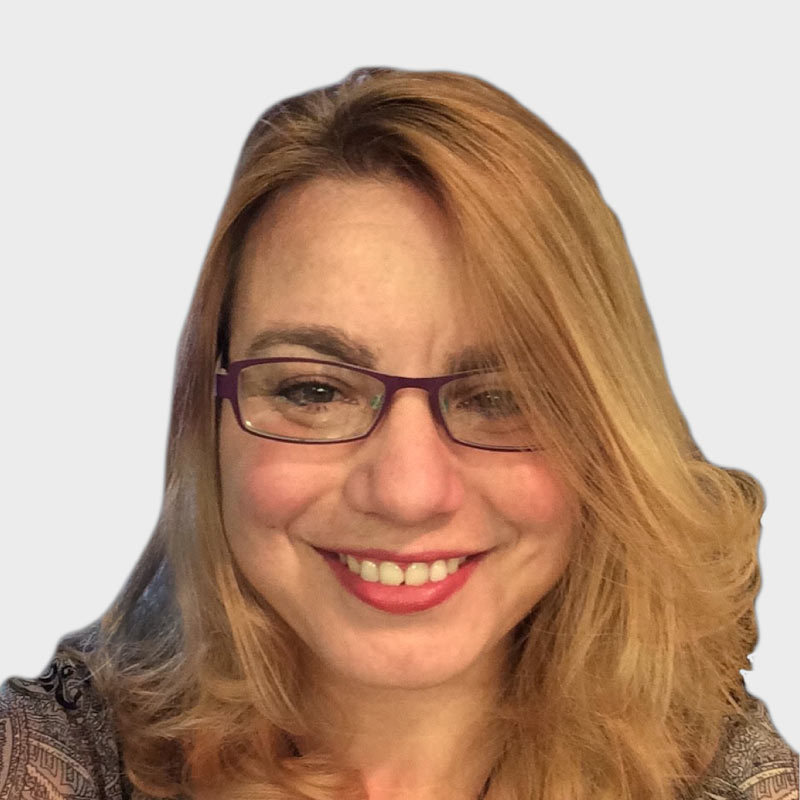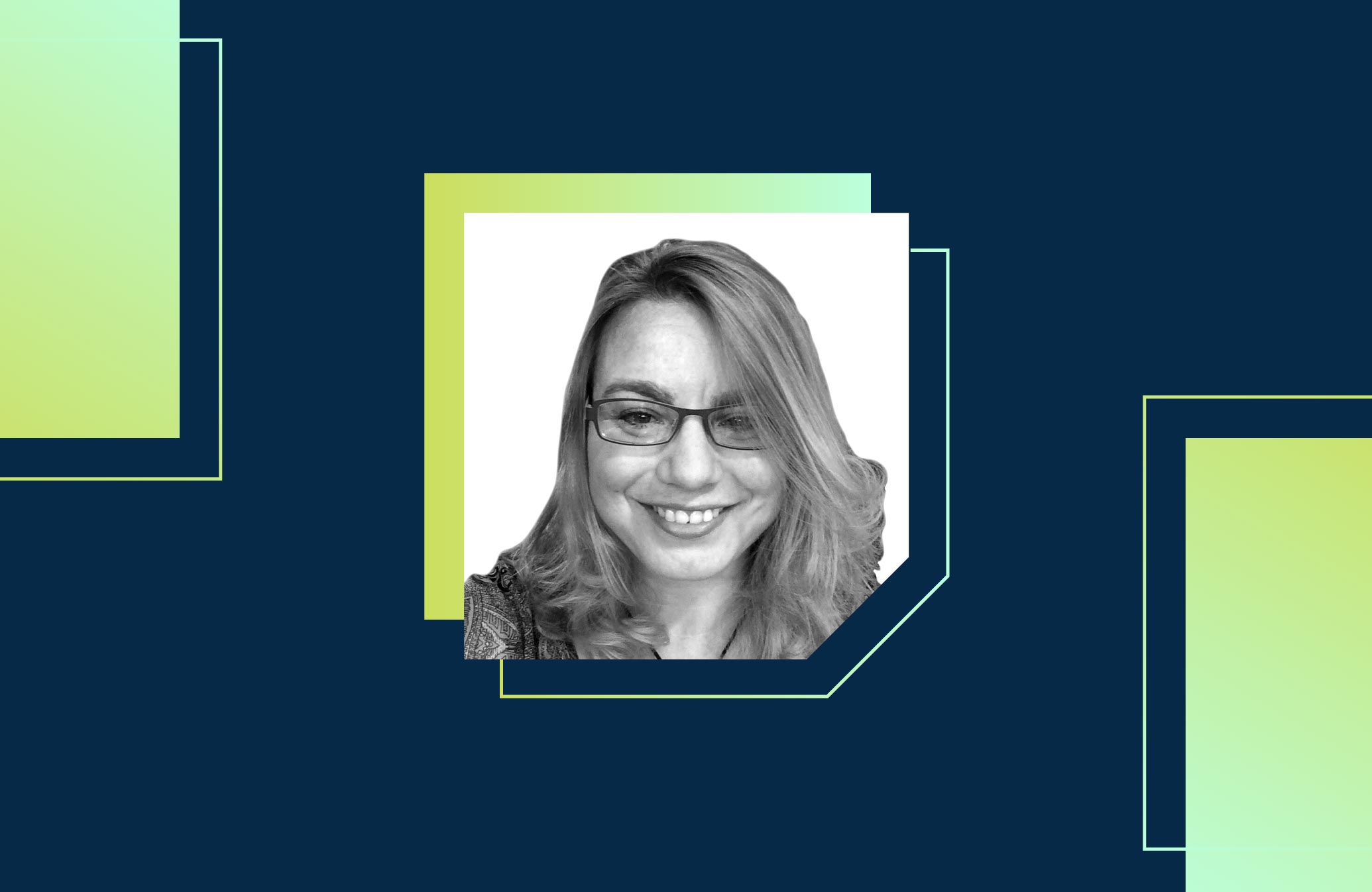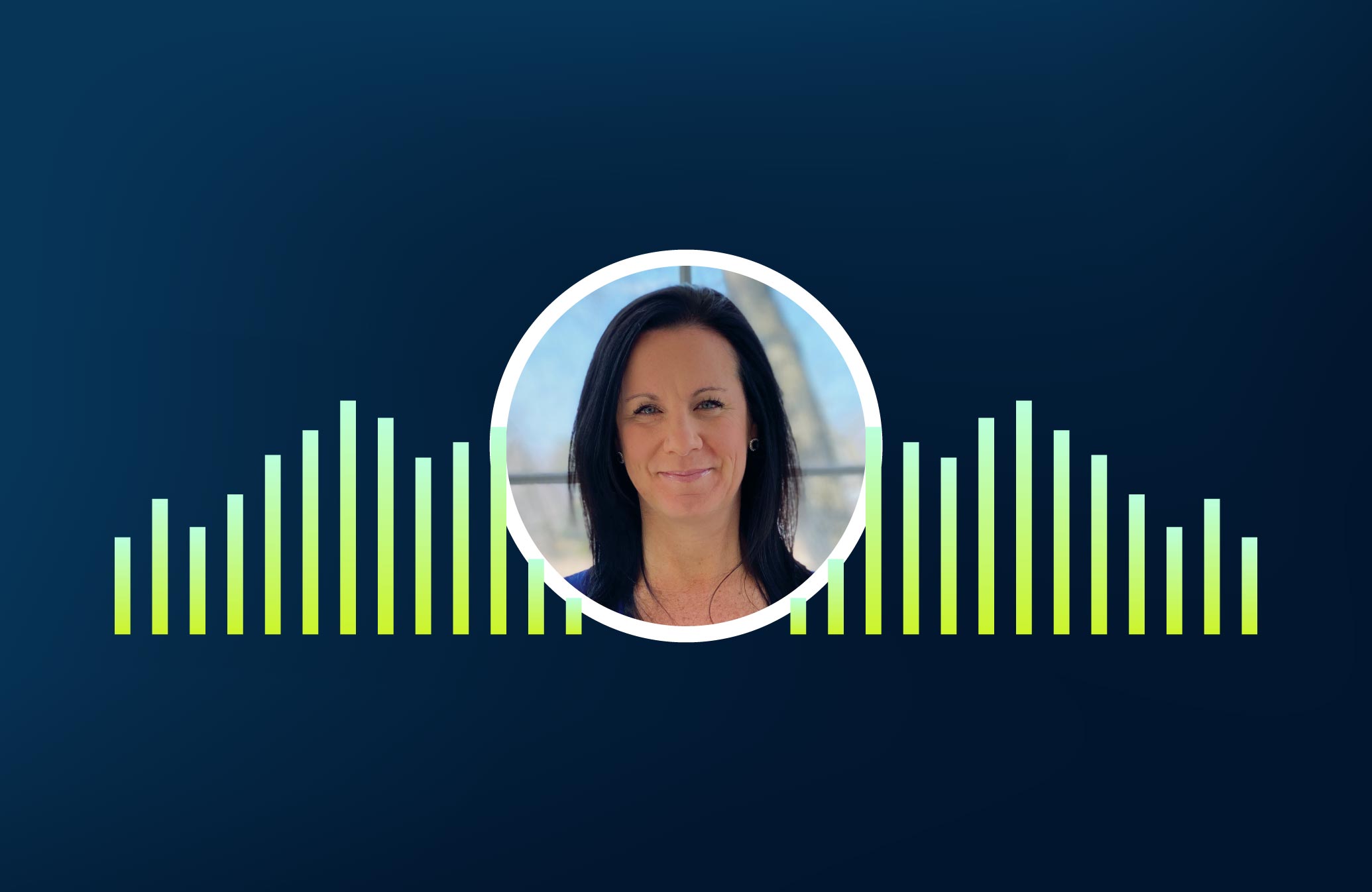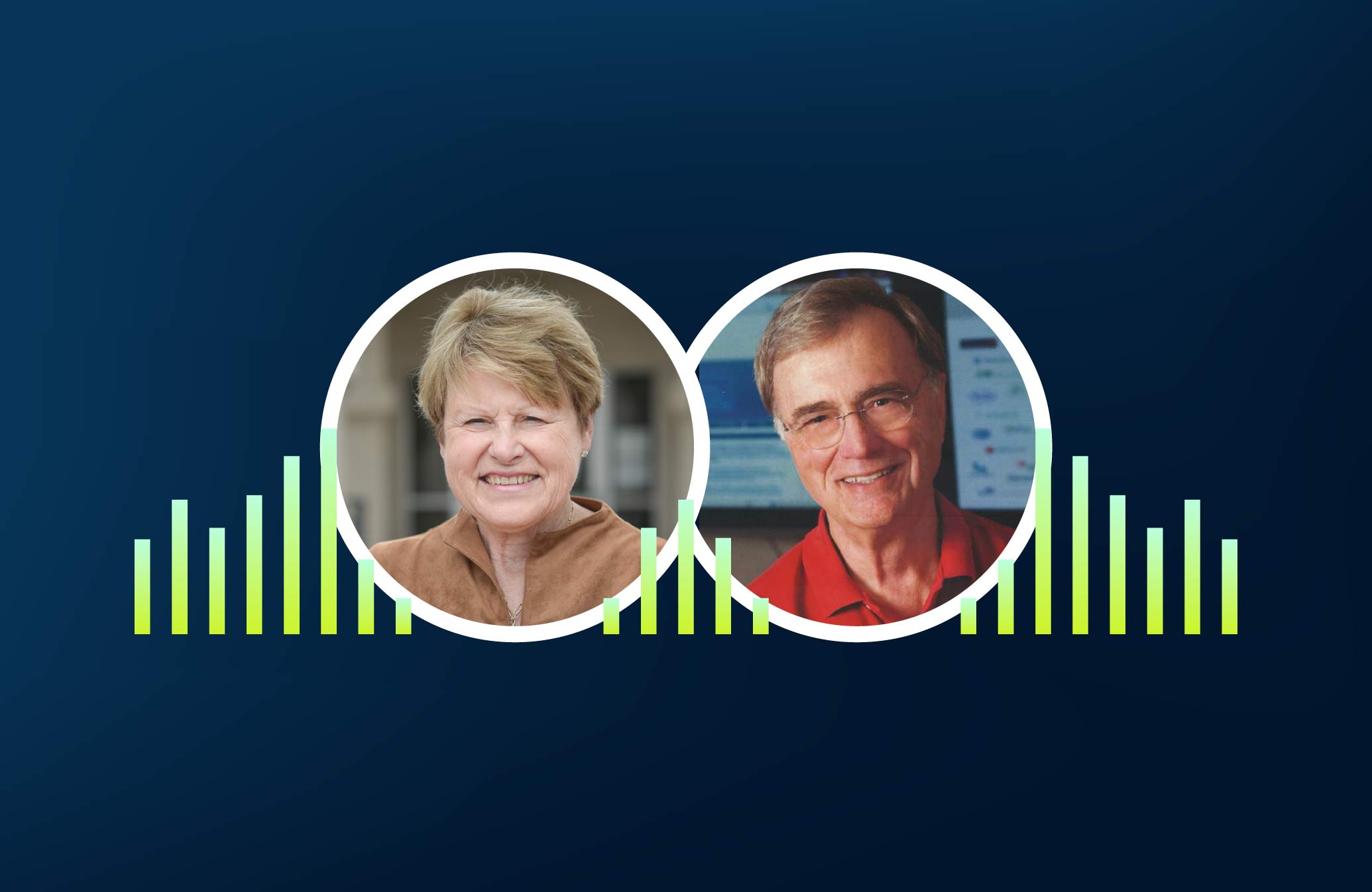Listen Now
Episode Transcript
Announcer: Health action innovators, leaders, and pioneers: You’re in the right place. RadioRev starts now.
Jenn Dellwo: Welcome back for another episode of RadioRev. I’m your host Jenn Dellwo. Thank you for joining us for season three. This series of episodes focuses on silver linings and new innovations in healthcare. We’ve experienced a lot of uncertainty and change over the last 15 months, catapulting the industry into a reality where creativity and bright spots have unexpectedly emerged as a result of the pandemic. So, this season really is about focusing on the bright spots—the innovations, the positive outcomes—highlighting the member stories that don’t often get heard. Today, we’re joined by Lora Alexander, Vice President of Engagement and Design at Icario. Welcome to the show. Thanks so much for being here.
Lora Alexander: Thank you. I’m ecstatic to be here!
Jenn Dellwo: So, why don’t we start with a little bit about your background and how you ended up at Icario?
Lora Alexander: Absolutely. I have spent the vast majority of my career in healthcare. My family all comes from different roles within healthcare—doctors, nurses, running labs. And there was kind of a belief that we’d all stay in the family and keep doing it. But I hate blood and gore. So, this is my way of finding a connection to the family path without doing something that would make me pass out! My background is primarily centered around research. My advanced degrees and everything are in research/market research and information technology, but from a research perspective. Corporate wise, I led primary research for many years at Optum, the nonclinical portion, anything from messaging to product design to win-loss or NPS. And then for several years directly before coming to Icario, I worked at Be The Match, which is the National Bone Marrow Registry, and there I led the end-to-end donor experience. So, from the minute a potential donor learns about Be The Match all the way through—I used to say until they die, but people said no, until “and beyond” was apparently somehow better. So, if you take those kinds of experiences together, it really led to my experience here at Icario. Plus one of my colleagues here, Corey Busse, was a friend from college. He contacted me and said that I had to apply, and he would kill me if I didn’t. So, there you go. What I do here is lead our engagement and design teams, which have many different facets. It includes our creative and content teams, everything from copywriters, translators, proofreaders, and editors, and our print and design team, which includes graphic designers, production designers, print design, and product strategists, and my UX and UI team, which includes UX research and then a separate research team.
Jenn Dellwo: Focusing on the research piece of your role, can you also share more about the field research you’ve done and how that applies to the conversation we’re having today?
Lora Alexander: Oh, completely. So, so much research. I would say healthcare in general is a little bit behind many of the other fields in terms of finding out targeted, specific—what we like to call “end of one” research. Healthcare knows a lot about the clinical aspects, the health aspects, but less around the communication or the engagement paths. And this has become very, very important, certainly in the past year. But I would say in the last 10 years—absolutely since the Accountable Care Act was passed, and we needed to start engaging patients and members in a different way. Some of the research that we have conducted field research wise, that has been very on point for the kind of work we do here at Icario. We conducted a great deal of targeted research within our Medicare populations to broaden our understanding and knowledge about how, where, when, and what members wanted to hear within their communications, including from whom did they want to hear, how they wanted to get that messaging, what kind of language they wanted to use, even the methodology of how they interacted. And that has been so instrumental in helping us to refine and specialize our content and our design capacity. Another area that we did that was super on target was we’ve started to do—and we’re doing quite a bit more—extensive research into cultural competencies. And this is really focusing in on understanding what drives a community to engage, to act, and what would influence a community or a person, and how to relate or react to stimulus, meaning communications or a request or call to action, whatever. And then even beyond that, how different communities ingest information, target information. And when we’re talking about this we’re talking about all aspects of diversity. So, yes, we’re talking about ethnicity or race, but we’re also talking about age, gender, LGBTQ, literal communities. One area that we’ve seen some really amazing differentiation is around language preferences in first gen immigrants to the United States.
Jenn Dellwo: I feel like we could talk about some of the research that you’re doing all day, but we can’t do that. The focus of this season and the conversation today is silver linings. So, what’s an example of an immediate pivot that healthcare needed to make when the world shut down at the start of the pandemic?
Lora Alexander: Well, the first thing I would like to say is I, too, could talk about research for the rest of the day, but I will behave! There’s an easy one. I would say the number one factor that I saw in terms of an immediate pivot was telehealth. Telehealth has such an extensive amount of potential. There was so much excitement and awareness about it before the pandemic hit, but there was a lot of doubt. There was a lot of confusion and distrust in all parties—I include providers, patients, payers. Then suddenly, almost overnight, it had to become the norm because you could not go to the doctor, not for something simple. Even some specialists, you simply couldn’t go in. We didn’t have enough equipment to protect our healthcare workers to allow them to see people in person, which is an event that is so unprecedented that nobody had even considered it, much less built out a path or a plan around it. And as a result, we had to move to a telehealth model, which has the potential to become a very great what I like to call “leveler,” meaning that telehealth brings the opportunities to people, communities, individuals, and groups that never had access before. So, if you think about it, rural communities all over the United States have had increasingly difficult access to mental healthcare, substance abuse care. And we didn’t allow, as an industry, for the most part, mental healthcare to be conducted via telehealth. Now it’s everywhere, which has allowed communities that previously—and this is no exaggeration—had to drive 100 miles to see a therapist, to be able to do it in their living room. That’s groundbreaking. We had communities with higher Medicaid populations, with limited access to doctors because doctors simply didn’t take their insurance, suddenly being able to do care through telehealth and having a much, much broader array or network of potential physicians, where in the past may have had to wait for a long period of time to get in. Suddenly, you can get in the next day or even the same day. And then another area that I really think is important is with some of our members with limited ability to leave their homes. This could be around transportation, physical difficulties, emotional difficulties, where they had difficulty getting to see the doctor, being able to actually get there. Then they can suddenly do it from the safety and security of their living room. We were seeing much greater inclusive behaviors around those audiences, and they’re much more likely to follow through on visits and follow up. So, all of those things are fantastic. Teladoc or telehealth, rather, telemedicine has a great potential for leveling that playing field.
Jenn Dellwo: Right. And I don’t want to put words in your mouth, but I imagine you would consider our ability to immediately bring telehealth options to members and patients as a bright spot?
Lora Alexander: One hundred percent. Yeah, that ability to communicate around the need for telehealth, the ability to say, “Here is something that you can do that can help you today.” Oh my goodness. That was an absolute bright spot. My team—I get to brag about my team for a little bit here because when COVID hit, the world froze. I mean, that’s really the only way to describe it. The world just froze. And then people started saying, “What does this mean? Do you think it’s going to be better in a week? Do you think it’ll be better in two weeks?” And our team had to very, very quickly say, “You know what? I don’t think it’s going to be over in two weeks, and we still need to figure out how to work with members to get them the healthcare that they need.” And they went into overdrive rewriting content, creating outreach that talked about everything from this is how you can do vaccines to this is how you can get telehealth and had to describe it for our audience. Thank goodness we’d done that field research. But to describe it for audiences that made it less scary, made it less intimidating, made it seem like it was less beyond their reach. We had to treat it like it was the new normal. And we’re talking about, Jenn, I mean, hundreds, hundreds of different pieces of outreach, different content deliveries and different methodologies, all of which had to be recreated so that we could talk about you can try telehealth, you can try telemedicine. And then all of our clients, meaning our payers, had different ways that they wanted that approached. So, we had to write all of that content multiple different ways. And my team just shown. I consider it a big, big, bright spot, both in terms of how we were able to help members and patients, and our clients, our payers, but also in how well my team was able to adjust and kind of pivot and move in that direction.
Jenn Dellwo: And from the payer perspective, you mentioned that it was something that needed to happen overnight. Can you share some examples of how this was implemented so quickly?
Lora Alexander: Yeah. So, first off, I want you to remember, right now we’re in a really good place information wise, right? We know where you can get a vaccine. We know when you can get the vaccine. We have consistent communication coming from the CDC, from the federal government, from our state governments. Put yourself back a year. Every week something new would come out. You were being told one day that you were likely to catch it on a piece of plastic, so spray everything down. And then the next day you’d hear, “Oh, maybe not.” Maybe you could just go anywhere. It’s not any big deal. It was crazy. And so we had to work with our payers, and the payers were very, very serious about needing to get communication out to members. We need to talk to them about this is how you continue to access healthcare. This is what COVID is. This is how you engage in specialist care or mental health or whatever. And they all had their own specific rules. And my team—and just teams throughout Icario, honestly, across the board—would meet with these clients and say, “Tell us everything you want, and then we’re going to go rewrite everything you already have and make that happen.” And we were doing it. You don’t want to always be excited about working 16-hour days, but really, that’s kind of what it was. It was turn on a dime, turn on it right away. And we went from a two-month hold on really any communications—because all of the communications previously were now kind of wrong—to implementing dozens a week of all very customized and newly written content. And that we were able to do across the board at Icario, which is unprecedented. The entire experience was a little surreal, but the speed and agility with which we were able to partner with our clients and make that message happen and help those members shift their mindset so that they could say, “All right, it seems scary to use a computer or my phone to talk to a doctor, but that’s far better than not having a check-in with my cardiologist, so I’m going to give it a try.”
Jenn Dellwo: It’s just amazing, looking back, how far we’ve come. I know I’ve had doctor visits over telehealth, and I’m just like, why would I ever not do this?
Lora Alexander: Exactly. Not to make it all personal, but I had what I thought was maybe an ear infection. And I called and I thought, oh, no, this is something that they’re not going to be able to do because they can’t see my ear. And they’re like, no, we don’t care about seeing your ear. You have all the symptoms. It’s fine. It was five minutes. And I said, no, I’ll never go. I don’t need to go see a doctor. It’s amazing.
Jenn Dellwo: It would be a miss to talk about telehealth as a bright spot without also recognizing the challenges that it presents, especially from a social determinants of health perspective, taking into account the growing digital divide. We need to call it out. We need to talk about how we know that telehealth isn’t available to everyone. And it’s something that we need to solve for. What is being done to overcome this barrier?
Lora Alexander: It’s such an important question. It is such an important aspect. I called it the “great leveler.” And it really can be so long as you have technology, as long as you have access. And yet we know that not everybody does. The extent to which technology moved from being important to being a top tier in the hierarchy of needs is complete. I mean, it is food, housing, and suddenly technology. Again, go back to a year ago when telehealth is just one very important piece. I mean, it was a primary source for healthcare, but technology goes beyond that. You couldn’t access most public transportation. I mean, entire cities locked down their buses and their trains. So, how do you get access to an individual rideshare? You use technology. Public offices—this is a really important one—were closed. You couldn’t go in to do anything from paperwork around public assistance to unemployment, to even just understanding how to get assistance with any public benefits. And now you were expected to do it from your phone or from your computer. Schools shut down, daycare centers shut down. Parents were required to teach their kids while they worked from home. And everyone is sharing the same broadband access—if you’re lucky enough to have broadband access. And yet we know entire populations didn’t. So, technology became an immense issue to the point where we did a study in conjunction with Harris Poll where we were evaluating and determining SDoH factors over the past year. We were looking primarily in Medicare and Medicaid. We did do some general population as well, or commercial audiences. And everything, of course, was in great need. And people were worried about food and housing and transportation. But for families with kids, the highest need was technology. And so we are doing some things at Icario where we’re partnering with organizations around things like, what if based off of healthcare behaviors, we could help some of the members gain access to subsidized technology or internet in their homes? Would that be something reasonable? Is there the possibility that we could partner with some payers to ensure that even something as simple as Chromebooks were provided for homes so that they continue to have access? And we’re looking into a lot of these things. But of course, they can only move so fast, and it’s going to take time. I would like to say, I don’t believe any of this is going away. I don’t think telehealth is going away. I don’t think our need and our reliance on technology is going to go away. And I think it’s just going to increase and increase. So, this is something that we are dedicated to doing in the short term and the long term here at Icario.
Jenn Dellwo: You just now spoke to it, and you talked a little bit about how we partnered with health plans, but I’d like to hear more about what Icario’s role has been. How have we impacted telehealth visits and helped connect more people to help?
Lora Alexander: Sure. A lot of it was around the content like we talked about. The aspect of normalizing, Jenn, was so important because for a lot of our populations, strongly in the Medicare space, but I would also say to a great extent in the Medicaid space, the concept of visiting a doctor via a web app or a phone was so completely foreign. And the idea of depending on this technology that you maybe didn’t have a lot of comfort around was overwhelming. And so we really had to work on our communication, on our language, on the methods with which we communicated and the paths in which we communicated. So, if we were putting something out for our Medicare populations—and this is a real thing we did—around considerations around COVID things to consider and how to do…how to use telehealth as a primary source to access your primary care physician. We created printable bullet pointed lists that our population could stick on their refrigerator so that they could refer back to it and say, “Oh, OK. It says right here, this is how you do it. Here are the steps.” We created lots of agreements with our client population where we said, “We need to make sure that our members have phone numbers that they can call if they’re confused.” We had to talk to them about the fact that for some of them, telehealth is going to be provided by their primary care physician. Some of them are going to have to use a telehealth service to the outside. And some of them are simply going to have to call their insurance company and figure out what they wanted them to do because they couldn’t go in. And all of those paths to communication had to be clear and concise and specific, but still non-scary and normalized. And we did that. We built lots and lots of educational content out there to help those paths. And then we partnered with so many of our clients to figure out—doing basic, very simple surveys—the likelihood of engagement of these populations. So, we knew who we had to do additional targeting for. Think about it. We could do something where we would send out a survey to the full population in a state, in a group, in a whatever and say, “How likely are you to use telemedicine?” And for the people who said no, we’d say, “Great, can we give you some information just now, right now, about it so that you can understand how it works?” Lay it all out there in very clear and concise language and then ask again, “Did that help? Are you more likely to use it?” And then take that small population that considered no to be the only option…nope, we’re still not going to do it. It’s scary and it’s weird, and then figure out new ways to communicate with them so that they, too, could engage in healthcare. It’s actually incredibly rewarding because you get to look back at the year and say, “Oh, my goodness, we did all that!” in like, no amount of time because everything turned so quickly.
Jenn Dellwo: Right. And with these new programs, did you hear any member stories that you can share?
Lora Alexander: Yeah. But it is less of a single member story and much more of just a consistent drumbeat of thank you. This was confusing. This was scary. I didn’t get it. And now I do. One of the things that my team really worked on is trying to put ourselves in this—you know, we always do this—but put ourselves in the seat of a Medicare member where you’ve always lived life to the fullest, you’re full of activity, and now where are you? You’re suddenly alone at home, isolated. You can’t have your family over to help you with things. Technology that you’ve never used before is suddenly required to exist. You have to figure out how to get your prescriptions filled, how to get services, how to talk to your doctor. And none of your paths that you’ve always done work—none of them! That is so overwhelming and so frightening that every time we’d hear from a member that would say, “Thank you, this isn’t scary anymore,” was a massive win for us.
Jenn Dellwo: What a big deal! That’s awesome. So, with the year that we’ve just had, after everything you’ve just described, all of the change and all of the uncertainty, what’s something that makes you feel optimistic?
Lora Alexander: The resiliency of people and the kindness of people. If you think about the stories that started coming out shortly after the shutdown, the incredible bravery, the almost incomprehensible bravery of our healthcare workers who, with a lack of supplies, a lack of protective gear, a lack of knowledge of even what is happening, went to work day in, day out, day in, day out, to help these patients who were also scared and were deeply, deeply ill. The fact that communities got together to cheer on those healthcare workers on a daily basis or a nightly basis, the fact that neighborhoods got together for very safe, socially distanced, masked things like sing-offs in the evenings. The fact that you heard about all of these high school students that started going grocery shopping for their elderly neighbors to make sure that they could get groceries because it still was so unsafe to go out. Those factors just give me an immense amount of hope. I believe that we as people can use our ingenuity, we can use our empathy, and we can use our kindness to overcome just about anything, certainly to adapt and thrive.
Jenn Dellwo: Final question. What’s something positive that’s come out of COVID-19 for you or for the healthcare industry that should never go back to the way that it was before?
Lora Alexander: Can I say telehealth? As you and I just said, I don’t ever want to have to go to the doctor again because I have an ear infection. I mean, that sounds ridiculous, but why? It’s easier for them. It’s easier for me. It’s five minutes on a phone call, and we’re done. I believe if we can figure out the technology—and that is a big lift that we knew we had to do anyway, and now it’s maybe even higher—but if we can equalize access to technology, I think telehealth is going to be one of the biggest, brightest, most exciting things that came out of this very scary year and allows people to have much healthier, much safer, much better lives.
Jenn Dellwo: Great. Lora, thank you so much. If people want to connect with you, what’s the best way to get in touch?
Lora Alexander: My email is Lora.Alexander@icariohealth.com. You’re certainly free to email me. I’m on LinkedIn. You can connect with me that way. Or you can contact Jenn, she knows where to find me.
Jenn Dellwo: That’s true. I’ll get you connected.
Announcer: Thanks for joining us for RadioRev. Make sure to subscribe and catch our next episode.
Inside the Episode
Lora Alexander, Vice President of Engagement & Design at Icario joins the show to talk about one aspect of healthcare that needed to transform overnight—literally—during the height of the pandemic: telehealth. In this episode, Lora discusses how behavioral research has supported telehealth & healthcare during the pandemic, answering questions like:
- How were we able to implement telehealth so quickly?
- What has Icario’s role been to connect more people to health?
- What makes you feel optimistic about the future?
Plus, a conversation about the digital divide and the barriers we still need to overcome to make telehealth accessible for all.
To connect with Lora and keep the conversation going, connect with her on LinkedIn.
“I don’t believe telehealth is going away. Our need for technology isn’t going away. It’s only going to increase so this, the digital divide, is something we are dedicated to solving for in the short-term and the long-term.”

Lora Alexander
Vice President, Engagement & Design, Icario
Can’t get enough of RadioRev?
Check out all of our episodes to stay up-to-date on the latest in healthcare innovation, social determinants, and health action.




